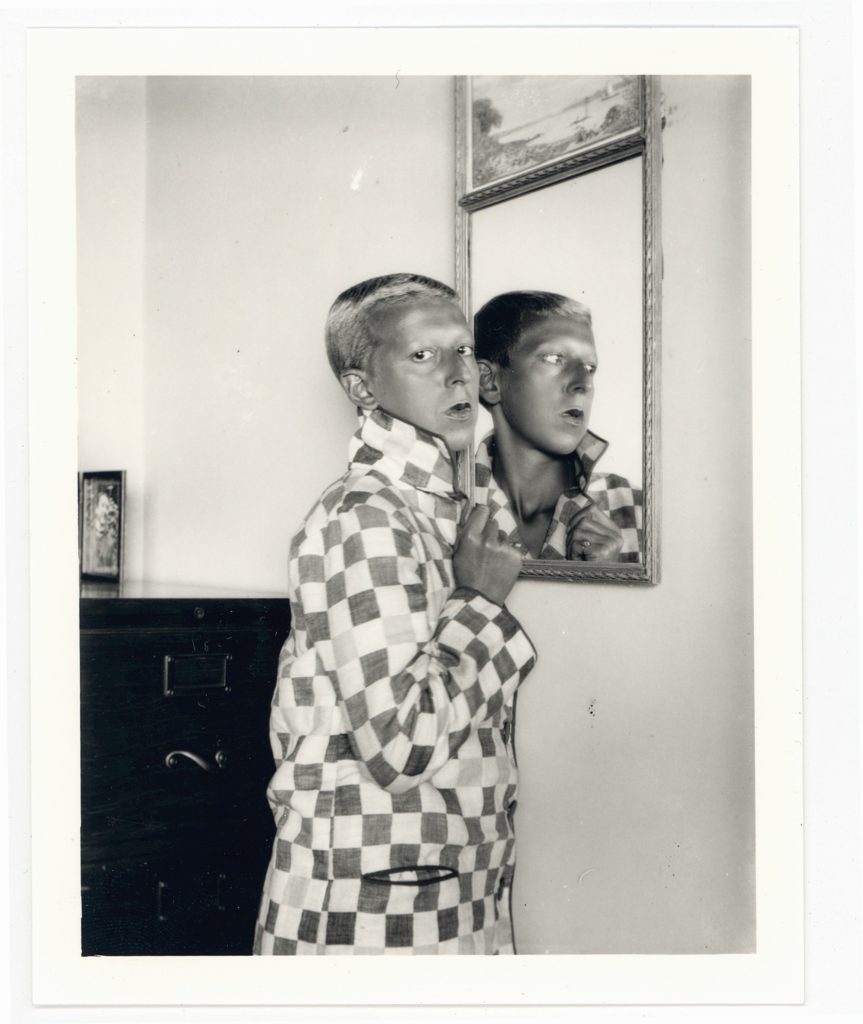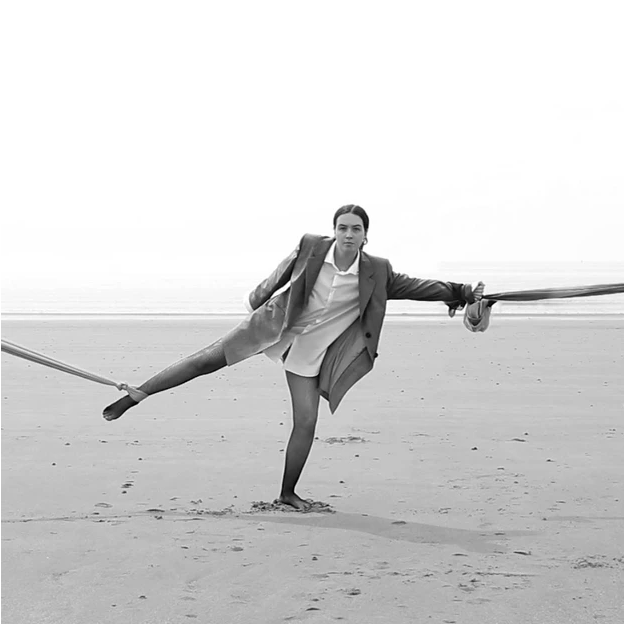In what way can the work of Claude Cahun and Shannon O’Donnell be considered political?
Claude Cahun was an androgynous, surrealist photographer, widely known for her enigmatic self-portraits and her activism during the occupation of Jersey in World War Two. In her portraiture, Cahun presented herself as many different ‘characters’ in order to explore gender identity and the subconscious mind. MoMA states that Claude Cahun ‘…made self-portraits that emphasize the fluidity of gender, refusing to adhere to statically masculine or feminine characteristics.’. Shannon O’donnell is a contemporary photographer, whose work is heavily influenced by the likes of Cindy Sherman and Claude Cahun herself. O’donnell’s work focuses on the modern issues of our society, often attempting to deconstruct the idea of gender binary, which she believes is a socially-constructed concept. Both Cahun and O’donnells’ work can be considered highly political in terms of gender and identity politics.
Identity politics is the tendency for people of a particular race, religion or social background to form political alliances that move away from traditional party politics. Both Cahun and O’donnell are argued to have incorporated identity politics within their work, by rejecting social norms surrounding their gender.

Firstly, this image in particular shows Cahun’s rejection of gender constructs. The presentation of herself within the photo is highly ambiguous. With a lack of distinguishing ‘male’ or ‘female’ features, the gender of the subject is notably difficult to specify. This, in itself, is a clear attempt to destroy the social construct of gender binaries.
In the image, Cahun is making direct eye contact with the camera, her head is shaven and the only visible parts of her body are her hands and her head. Many of her portraits only presented her head and her shoulder, and due to the theatrical nature of her work, Cahun often shaped her body to blur any gender indicators. Cahun would position herself with purpose. This theatre became an important feature of Cahun’s work, as she aimed to avoid displaying any behaviour that could be attached to a specific gender. She does this in an attempt to remain androgynous.
Furthermore, it can be argued that Cahun is criticising the stereotypes of women at the time. Initially through her physical appearance, yet also through the use of props in her image. One of the main focuses of the image is the reflection of Cahun in the mirror. At the time and still in modern art today, mirrors frequently have connotations of vanity. The fact that Cahun is facing away from the mirror, despite being in such close proximity to it, amplifies her rebellion against female beauty standards and ideals of the time, as she is refusing to appear ‘vain’ and refusing to show the audience that she cares about her appearance.
These are all clear indicators that Cahun is distinguishing herself from the rest of society by taking hold of her own identity and not allowing social norms to influence it.

O’donnell’s work also incorporates identity politics. In her series ‘That’s not the way the river flows’, O’donnell has taken inspiration from Cahun in presenting her gender. Many of the images depict O’donnell in both stereotypically ‘male’ clothing and stereotypically ‘female’ clothing. Her work clearly shows her exploration of the social constructs of society, specifically the social construct of gender binary. She aimed to deconstruct it, as well as showing her own conflict as to whether her own identity is entirely defined on her birth sex.
O’donnell also incorporates theatre into her work. Adjusting and mismatching her clothing is just one of the ways she presents her struggle with identity. In this particular image, O’donnell is wearing what appears to be a shirt and blazer, matched with fishnet stockings. These two conflicting items of clothing shows her rebellion against societal norms. Additionally, the use of props pulling her towards opposite sides of the frame represents how society attempts to segregate both genders and categorise what can be worn by each one. Furthermore, the location is fairly abstract, having no context or link towards the rest of the ideas portrayed through the image. This can be interpreted as representing the absurdity of social constructs within our society.
O’donnell addresses multiple political topics throughout her work. In her series ‘Abort Mission’, she covers the culture war between religion and abortion. Her inspiration behind the project stemmed from her experience with anti-abortion protesters who she encountered praying outside of an abortion clinic, claiming that their protesting was relevant and important to their religion. Within the project, O’donnell incorporates visuals of the church and the protesters to highlight this. O’donnell has also been inspired by the suffragette movement, in turn creating her feminist project ‘The cat and the mouse’, which celebrates and informs the audience about the suffragette movement and the history of how women’s rights finally became equal to men in terms of voting. Much of O’donnell’s work focuses on modern, global issues, whereas Cahun focused majorly on her own identity and the socially construed binaries surrounding gender during the time.
Though not presented in her work, Cahun actively protested against the absurdity of warfare. Alongside her partner Marcel Moore, Cahun created a persona referred to as ‘Der Soldat Ohne Namen’ (‘The Soldier Without a Name’) in which she posed herself as an unknown German soldier with the sole intent to incite rebellion within the army. Cahun took a more active approach in comparison to O’donnell with her rebellion against gender and identity politics. Changing her name and appearance to become androgynous were highly valiant and insubordinate acts, as gender stereotypes during the time were enforced and highly normalised (especially towards women). With gender expression being more fluid in modern society, O’donnell’s work is less about rebellion against society but rather about expressing her own identity and pushing the idea that gender identity shouldn’t be confined to two strict binaries.
Overall, both Claude Cahun and Shannon O’donnell’s work is highly political however, you can argue that their work is most influential within their own timelines. For example, if Cahun’s work was released in this era, it may not have had the same impact or have been as shocking to its audience as it was during the 20th century. Much of modern society, especially the younger generations, comfortably and confidently mix male and female stereotyped appearances within their own identity. This, however, wasn’t normalised in Cahun’s time and so her work proved to be highly pivotal in developing identity politics. O’donnell’s work is highly relevant to modern issues and gender politics. She incorporates male and female gender aspects in her work and applies it to her identity, aiding in the modern push to deconstruct gender binaries.
